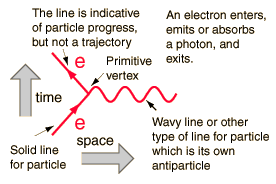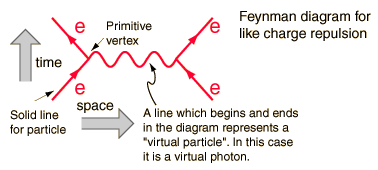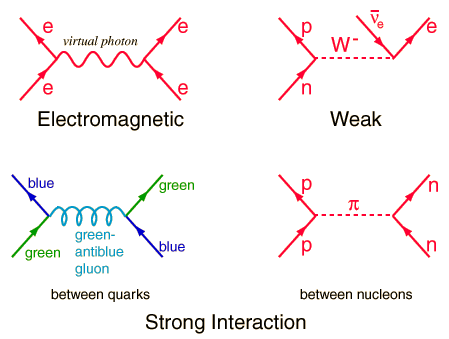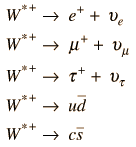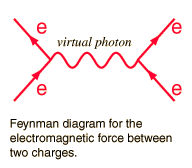Gluons
Gluons are the exchange particles for the color force between quarks, analogous to the exchange of photons in the electromagnetic force between two charged particles. The gluon can be considered to be the fundamental exchange particle underlying the strong interaction between protons and neutrons in a nucleus. That short-range nucleon-nucleon interaction can be considered to be a residual color force extending outside the boundary of the proton or neutron. That strong interaction was modeled by Yukawa as involving an exchange of pions, and indeed the pion range calculation was helpful in developing our understanding of the strong force.
| Gluon interactions are often represented by a Feynman diagram. Note that the gluon generates a color change for the quarks. The gluons are in fact considered to be bi-colored, carrying a unit of color and a unit of anti-color as suggested in the diagram at right. The gluon exchange picture there converts a blue quark to a green one and vice versa. The range of the strong force is limited by the fact that the gluons interact with each other as well as with quarks in the context of quark confinement. These properties contrast them with photons, which are massless and of infinite range. The photon does not carry electric charge with it, while the gluons do carry the "color charge". | 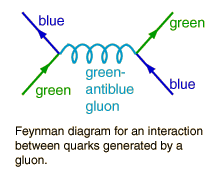 |
Within their range of about a fermi, the gluons can interact with each other, and can produce virtual quark-antiquark pairs. The property of interaction with each other is very different from the other exchange particles, and raises the possibility of gluon collections referred to as "glueballs". The internal state of a hadron is viewed as composed of a fixed net number of quarks, but with a dynamic cloud of gluons and quark-antiquark pairs in equilibrium.
Particle concepts
Reference
Griffiths
Section 2.3
| HyperPhysics***** Quantum Physics | R Nave |
